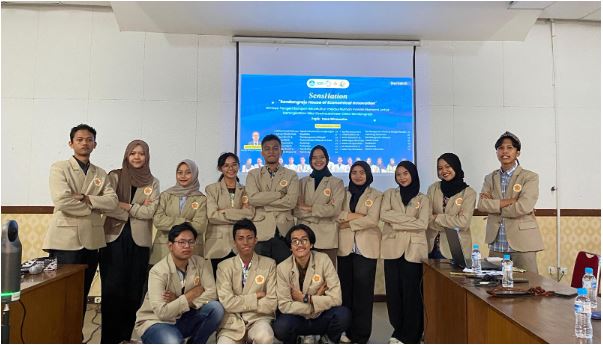
A collaboration of 15 UGM students from various study programs has undertaken a community service project focused on the downstream of freshwater fisheries in Sendangrejo Village, Sleman Regency, Yogyakarta Province.
This community service activity was made possible with funding from the Ministry of Education through the 2024 PPK Ormawa program. The team, named Nawasatya, successfully created a program matrix called SensHation (Sendangrejo House of Economical Innovation).
One of the SensHation programs aims to enhance Sendangrejo Village’s entrepreneurial value. This program’s primary focus is increasing the entrepreneurial value of the fisheries groups and the community of Sendangrejo Village.
“This program stems from issues over the past few years, namely the decline in gourami fish production by 8 tons in 2021 due to climate change, which was marked by the contamination of water sources from the Putih River through the Van Derwijck Canal,” said Muhammad Salman, the head of the Nawasatya team, at UGM on Friday, Jul. 12, 2024.
Salman explained that the outbreak of the COVID-19 pandemic in 2020 led to a slump in the fisheries market. The surge in feed costs caused an imbalance between consumer demand and high production costs.
Through the SensHation program, he said that student community service activities will be conducted over the next few months, focusing on improving the economic value of the Sendangrejo Village community.
“We hope that the designed downstream program will help restore the market climate and the selling value of fisheries more optimally,” he explained.
Furthermore, he elaborated that the Nawasatya team, through the SensHation program, introduced three main programs.
First, House of Hatchery Innovation includes a series of activities for tilapia fish nurseries using Water Chamber Incubator technology and the creation of Bioactive Filters for gourami fish nurseries.
Second, House of Product Innovation involves the diversification of processed fish products.
Third, the House of Merchant Innovation includes entrepreneurial management training and marketing product assistance through partnership networks.
“These three main programs were established after thorough surveys, lengthy discussions, and a commitment to accelerating the village’s SDGs,” he explained.
Salman highlighted that this downstream program’s success milestone began with the nursery system through water chamber incubator technology to increase the hatching rate of tilapia eggs and bioactive carbon filters to improve water quality in the gourami fish nurseries.
This was followed by optimizing the diversification of processed fish products, such as making fish floss, fillets, and fish balls.
“In the last month of the program, we will conduct entrepreneurial management training for fisheries groups and business actors to expand the production market,” Salman added.
Nasih Widya Yuwono, the supervising lecturer, suggested that the team continuously improve performance and expand the program’s target reach.
Yuwono mentioned that this downstream program supports increased fisheries production and market reach in Sendangrejo Village.
Yuwono explained that the concept of nurseries and product diversification requires strong R&D and stakeholder support for optimal results.
Therefore, the team will collaborate with several strategic partners in each program to support the success of the SensHation program.
Yuwono also mentioned that the SensHation aquaculture downstream program aligns with the village’s Sustainable Development Goals (SDGs) through inclusive and sustainable economic growth.
This synergy aligns with the eighth SDG to ensure balanced economic growth in the village with an established fisheries business climate.
“We also hope that the SensHation program supports the achievement of the twelfth SDG, which is responsible consumption and production by utilizing fish harvest residues through product diversification,” he stated.
Author: Aprila Kusuma Dewi, Vera Kusuma Dewi
Editor: Agung Nugroho
Photo: UGM Nawasatya Team
Post-editor: Lintang

